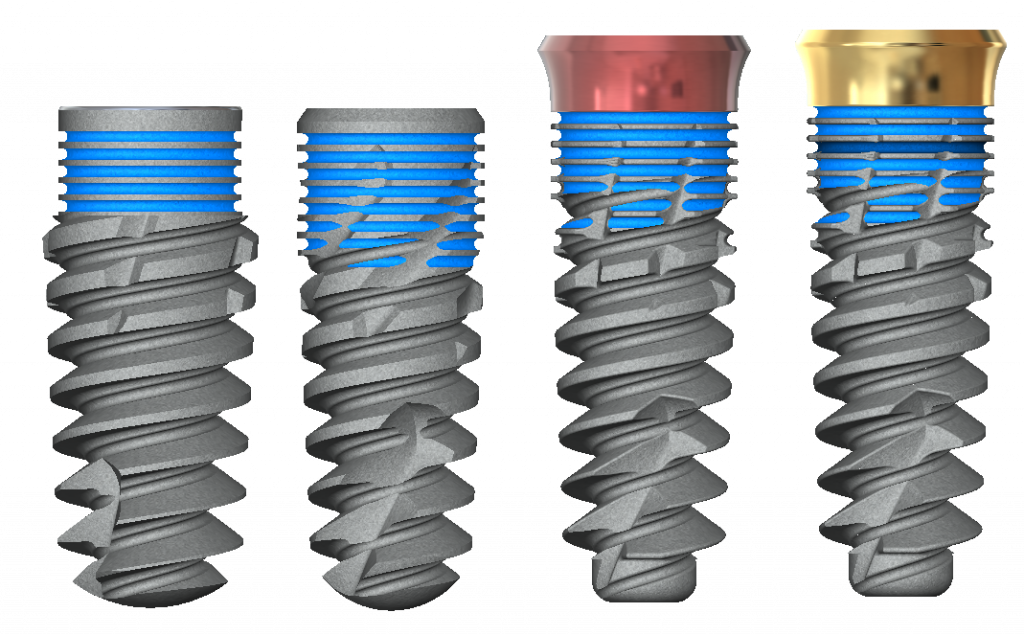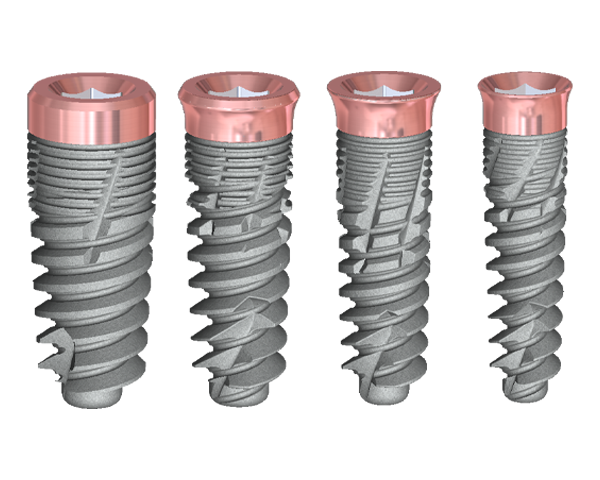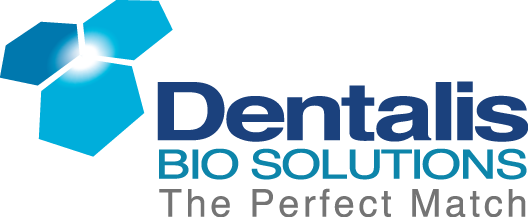Importance / the influence of Micro and Mini Cortical Thread™ – biomechanical bone stimulation
The principles of retention elements in terms of smaller sized Minute-Threads on the implant neck, were introduced on as early in the 1990′ and are one of the important key for maintain the marginal bone. These principles are well investigated in many studies Regarding the size depth and shape of the increased retention elements of the Micro & Miniature thread.
The Minute-Threads system enhances the contact area between implant and bone.
The principles of retention elements in terms of smaller-sized Minute-Threads on the implant neck were introduced as early as the 1990′ and are one of the important keys for maintaining the marginal bone. These principles are well investigated in many studies Regarding the size depth and shape of the increased retention elements of the Micro & Miniature thread. The Minute-Threads system enhances the contact area between the implant and bone.
In fact, All study’s of the mechanical properties of bone [1] found it to be more resistant to compressive forces than tensile and shear forces (its resistances to the latter were reportedly 30% and 65% lower, respectively than its resistance to compression).
It is suggested that the load transfer characteristics of the implant are dependent on the size and design of the implant neck [5–7].

The principles of retention elements in terms of smaller-sized Minute-Threads on the implant neck were introduced as early as the 1990′ and are one of the important keys for maintaining the marginal bone. These principles are well investigated in many studies Regarding the size depth and shape of the increased retention elements of the Micro & Miniature thread. The Minute-Threads system enhances the contact area between the implant and bone.

In fact, All study’s of the mechanical properties of bone [1] found it to be more resistant to compressive forces than tensile and shear forces (its resistances to the latter were reportedly 30% and 65% lower, respectively than its resistance to compression).
It is suggested that the load transfer characteristics of the implant are dependent on the size and design of the implant neck [5–7].
The crestal module design is particularly important with regard to minimizing bone loss, because it can decrease the sheer force exerted on the crestal bone [2]. Therefore, it has been hypothesized that bone loss slows down at the first thread of the implant fixture when the force changes from a crestal shear force to a compressive force induced by the thread itself [3]. In addition, correlations were found between the amount of bone loss and the length of the machined surface for various implant systems, thus relating bone loss to the level of the first thread [4].
The Benefits of Mini Thread compared with a smooth neck in terms of established bone-to-implant contact [10,11] and maintained marginal bone levels are well documented [12–14]
Mini Thread preserved the bone better than an implant without Mini Thread in a 2-year follow-up study [13], in a three-year randomized controlled study [41], and when placed immediately into extraction sockets [42]. Further, it does not matter for the bone if the neck portion of the implant is tapered or parallel [43].
The results of all studies that used two types of implants (one with the Minute-Threads on the coronal portion of the fixture and one without) suggested that Minute-Threads have the effect of maintaining the marginal bone loss in the presence of loading forces [2]. The amount of peri-implant bone loss was significantly larger around implants without Minute-Threads than around those with Minute-Threads during the examination period.
From a review of the literature, Kwon et al. [5] concluded that the marginal bone loss associated with a flat-top implant is 1.0 to 1.3 mm at 1 year post-implantation, even in the presence of an improved surface [6–8].

Mini Thread preserved the bone better than an implant without Mini Thread in a 2-year follow-up study [13], in a three-year randomized controlled study [41], and when placed immediately into extraction sockets [42]. Further, it does not matter for the bone if the neck portion of the implant is tapered or parallel [43].

The results of all studies that used two types of implants (one with the Minute-Threads on the coronal portion of the fixture and one without) suggested that Minute-Threads have the effect of maintaining the marginal bone loss in the presence of loading forces [2]. The amount of peri-implant bone loss was significantly larger around implants without Minute-Threads than around those with Minute-Threads during the examination period.
From a review of the literature, Kwon et al. [5] concluded that the marginal bone loss associated with a flat-top implant is 1.0 to 1.3 mm at 1 year post-implantation, even in the presence of an improved surface [6–8].
In contrast, the marginal bone loss with a Minute-Threads, and platform-switched design was found to be 0.11 to 0.24 mm [2,9]. Those authors concluded that the marginal bone levels of the subjects in their study (0.16 to 0.17 mm) were comparable to those of previous studies.
Similarly, in the present study, the mean amount of marginal bone loss was smaller, and it can therefore be assumed that Micro-threaded and platform-switched implants have the ability to reduce marginal bone loss because of certain features of the implant design.
Dentalis Implants are offering beside the Minute Cortical Threads™ also specially Micro-thread that was design in terms of shape, depth and pitch for maintaining the soft tissue [27].
In fact there is only one published study on implants with Mini Thread vs. implants without Mini Thread that showed no difference in terms of 1-year marginal bone evaluation [16].
Prospective studies applying standard surgical technique report a mean marginal bone level change of 0.3 mm after 5-12 years of function [17–26].
Comprehensive data from the last 20 years of clinical experience clearly shows that the Micro and Mini Cortical Thread on Dental Implant is a safe and predictable choice in the short and long-term perspective.
Micro and Mini Cortical Thread™ maintains the marginal bone and offers for this reason a good foundation for a long-term esthetic result.
To download Full
Article press here
Stay Safe. Wear a Mask!
The pink tissue versatile implant neck combines superior gingival aesthetics and high primary stability, improved placement, and temporization, which is particularly beneficial in aesthetically demanding cases.

